When a company has been around for 122 years, it’s easy for outsiders to think they know all there is to know about the organization. But if you think you know Wasserstrom, think again. Over the course of the company’s history, there have been only two constants: change and the Wasserstrom family. And the former would not happen without the constant prodding from the latter.
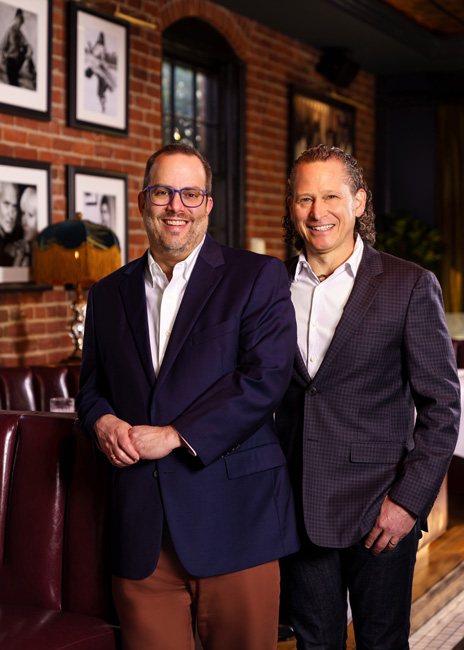 Cousins Brad (left) and Eric Wasserstrom are fourth-generation leaders of foodservice equipment and supplies dealer Wasserstrom. They lead with a service-first model and continue to diversify offerings.Wasserstrom got its start in 1902, when Nathan Wasserstrom began selling brewing supplies in Columbus, Ohio. Over the years, though, the company had to adapt to conditions beyond its control, like Prohibition, two world wars and, most recently, a global pandemic. “That is one of the keys to the Wasserstrom companies: it’s the family’s willingness to evolve over time,” says Dan Poor, senior vice president of growth and innovation. “You don’t survive for more than 120 years unless you are willing to pivot.”
Cousins Brad (left) and Eric Wasserstrom are fourth-generation leaders of foodservice equipment and supplies dealer Wasserstrom. They lead with a service-first model and continue to diversify offerings.Wasserstrom got its start in 1902, when Nathan Wasserstrom began selling brewing supplies in Columbus, Ohio. Over the years, though, the company had to adapt to conditions beyond its control, like Prohibition, two world wars and, most recently, a global pandemic. “That is one of the keys to the Wasserstrom companies: it’s the family’s willingness to evolve over time,” says Dan Poor, senior vice president of growth and innovation. “You don’t survive for more than 120 years unless you are willing to pivot.”
In doing so, the company draws from its past to ensure it has a future. “It was March of 2020, and the business faced many challenges and uncertainties. We were trying to communicate this to everyone,” recalls Eric Wasserstrom, one of the company’s presidents. “We have written history books about the company commemorating certain anniversaries, and along the way those books told the story of the Great Depression, World War I, World War II, and so on. We rely on that history to help us understand how to deal with modern crises.”
By applying those past lessons, the company remains flexible and future-focused. “Things happen, and the model has to change,” says Brad Wasserstrom, one of the company’s presidents. “During Prohibition, one of our great uncles bootlegged wine. He would go to Chicago and Canada and bring wine back here to Columbus to sell it. You can’t be so beholden to the model that you are unwilling to look outside the boundaries. If you are true to your core values and your mission statement, though, your company will come through it.”
Company Evolution
From a distance, it may not look as if much has changed with Wasserstrom since the company last earned Dealer of the Year honors in 2014. But that’s hardly the case.
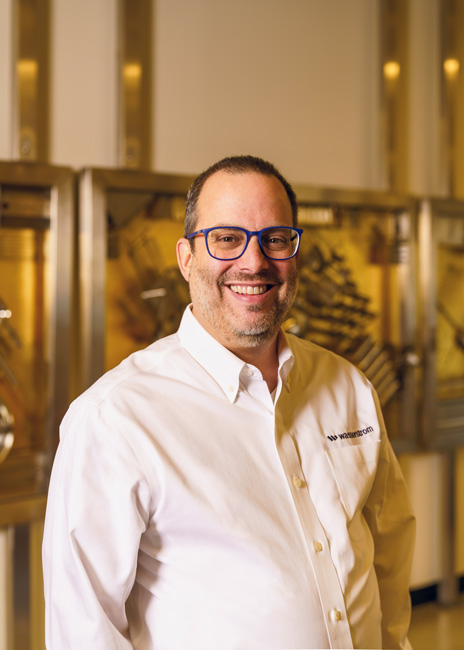 Brad Wasserstrom, president: “You can’t be so beholden to the model that you are unwilling to look outside the boundaries. If you are true to your core values and your mission statement, though, your company will come through it.”In general, Wasserstrom still consists of two divisions headed up by cousins Brad and Eric. They are the fourth generation of the Wasserstrom family to lead the business. Brad’s areas of responsibility include national account smallwares distribution and traditional dealer functions, like street and regional sales, as well as retail. Eric is responsible for the heavy equipment distribution and all the engineered solutions for national accounts. Generally speaking, that format has been in place since the 1980s and has served the company well. But that does not mean this approach will guarantee future success. “How we think about our businesses has changed over the past 10 years,” Eric says. “This shift impacts both sides of the business and shapes how the company serves its customers across the board. Our chain customers are in their own set of dynamic change based on economics, transactions, demographics, food changes and more.”
Brad Wasserstrom, president: “You can’t be so beholden to the model that you are unwilling to look outside the boundaries. If you are true to your core values and your mission statement, though, your company will come through it.”In general, Wasserstrom still consists of two divisions headed up by cousins Brad and Eric. They are the fourth generation of the Wasserstrom family to lead the business. Brad’s areas of responsibility include national account smallwares distribution and traditional dealer functions, like street and regional sales, as well as retail. Eric is responsible for the heavy equipment distribution and all the engineered solutions for national accounts. Generally speaking, that format has been in place since the 1980s and has served the company well. But that does not mean this approach will guarantee future success. “How we think about our businesses has changed over the past 10 years,” Eric says. “This shift impacts both sides of the business and shapes how the company serves its customers across the board. Our chain customers are in their own set of dynamic change based on economics, transactions, demographics, food changes and more.”
To deal with these shifting dynamics, Wasserstrom has become a more tight-knit organization than in the past. “Together, we meet more often to look at financials and the company. We share more information. We do more bids for customers together,” says Gary Mangelson, chief financial officer and executive vice president for the company. “The divisions each do something differently, but when you talk about the way we provide customer service, it is important that we work together.”
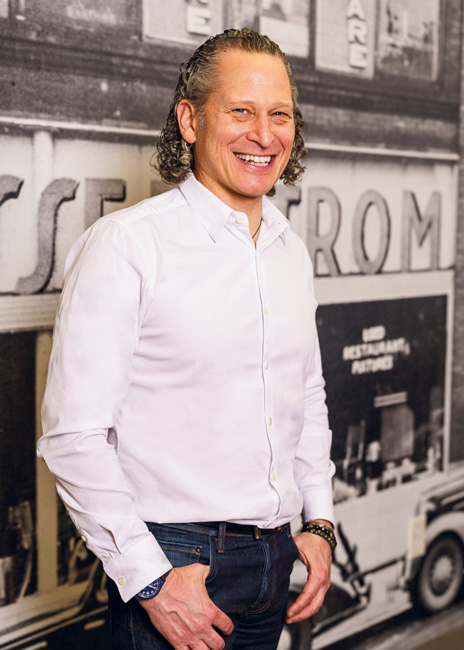 Eric Wasserstrom, president: “We rely on that history to help us understand how to deal with modern crises.”The company has added new leaders, who have brought innovative perspectives and experiences to their roles. For example, in 2018, Treva Weaver came on board working with Eric in heavy equipment distribution and manufacturing. She now serves as chief operating officer for that side of the business. And in 2019, Cathy King came on board as executive vice president of sales, overseeing sales, as well as leading the marketing, e-commerce and retail aspects of the business that Brad leads.
Eric Wasserstrom, president: “We rely on that history to help us understand how to deal with modern crises.”The company has added new leaders, who have brought innovative perspectives and experiences to their roles. For example, in 2018, Treva Weaver came on board working with Eric in heavy equipment distribution and manufacturing. She now serves as chief operating officer for that side of the business. And in 2019, Cathy King came on board as executive vice president of sales, overseeing sales, as well as leading the marketing, e-commerce and retail aspects of the business that Brad leads.
At the same time, the company continues to embrace some of what has made it so successful for so long. Helping associates get a firm understanding of not only where the business is headed but also where it came from does not happen by accident. It starts with understanding each division’s set of values and how these values drive the business. The values driving the more traditional side of business are family, hard work, service, honesty and integrity. The values that shape the heavy equipment distribution side of the business are attitude, effort, trust, innovation and family. The value sets may use different terms, but they both strive to do the same thing: provide clarity and structure when it comes to serving customers and one another.
“It comes down to accountability, and I don’t mean finding someone to blame,” Mangelson says. “Accountability means asking ‘What can I do to make a difference?’ Every business has issues that come up. If businesses were perfect, they would not need people. But we need to find out how to solve problems for our customers when they arrive. As our associates think about how they can resolve problems thoughtfully, customers see it, and they want to come back. That culture exists throughout the company and goes across departments.”
That philosophy starts at the top and permeates its way throughout Wasserstrom. “I came from a very large, publicly traded company that was very much based on quarterly results,” King says. “Here, it’s a marathon — not a sprint. We take a long-term approach, and we do things for our employees that we could never do as a publicly traded company.”
For example, if an associate is dealing with a personal issue, be it family or health related, the company can be more flexible and take care of the person. “We watch out for each other throughout the company,” says Tony Austing, a vice president of account services and a business unit leader. “We have a great balance between the work and some of the play aspects of what we do. We don’t always agree, and we are willing to challenge each other, but we still come out of meetings agreeing on the direction. And we always have each other’s backs.”
Enhanced Customer Focus
Customer focus has long been a Wasserstrom strength, and the company knows it. By the same token, though, Wasserstrom’s leaders are not content to rest on their laurels, but instead they continually seek ways to bring the company closer to its clients. In order to grow closer to one’s customers, though, everyone must be on the same page when it comes to the company’s business model. “We are a service-first model. We worked hard on that the past couple of years, training our associates that we sell service first,” says Eric Myers, vice president of marketing and customer experience. “One of the biggest changes we made since I got here is cross-company collaboration.”
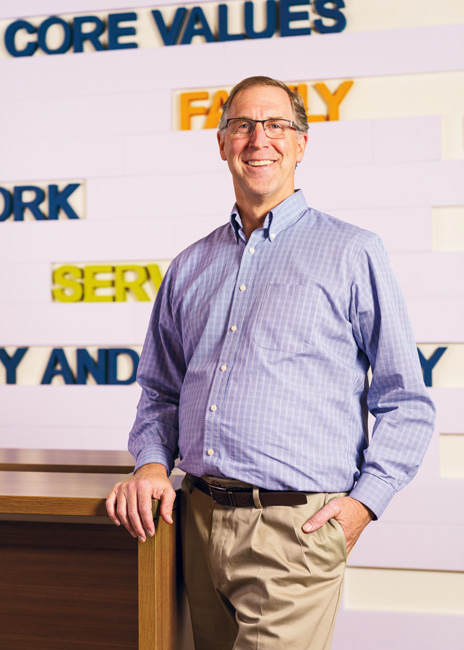 Gary Mangelson, chief financial officer and executive vice president: “The divisions each do something differently, but when you talk about the way we provide customer service, it is important that we work together.”Facilitating cross-company collaboration starts with understanding who the customer truly is. “We [the national equipment group] don’t talk about internal customers anymore. The only customers that pay the bills are outside of the company. Understanding that helps us get our priorities right,” Weaver says. “We destroyed the silos inside our company by getting everyone focusing on the customer. Our job is to get the product and accurate information to the customer. It’s bigger than your job description. And the company’s client-facing roles have brought that to the forefront. We now have a client champion role. They have full accountability for that brand across our company, and they serve as a liaison to the other departments. That includes billing, installation and more.”
Gary Mangelson, chief financial officer and executive vice president: “The divisions each do something differently, but when you talk about the way we provide customer service, it is important that we work together.”Facilitating cross-company collaboration starts with understanding who the customer truly is. “We [the national equipment group] don’t talk about internal customers anymore. The only customers that pay the bills are outside of the company. Understanding that helps us get our priorities right,” Weaver says. “We destroyed the silos inside our company by getting everyone focusing on the customer. Our job is to get the product and accurate information to the customer. It’s bigger than your job description. And the company’s client-facing roles have brought that to the forefront. We now have a client champion role. They have full accountability for that brand across our company, and they serve as a liaison to the other departments. That includes billing, installation and more.”
On both sides of the business, Wasserstrom assigns a single point of contact to work with each customer. This person knows how the client functions, as well as how Wasserstrom functions. And it is their role to draw from the company’s well of resources to best serve the operator. “We have one person setting the direction for customer service,” King says. “We meet regularly to make sure everyone is aligned. In the past, everyone was responsible for their own vertical, but now they are part of the bigger picture. We are more aligned with the same strategic direction.”
Keeping an eye on the bigger picture pays dividends in a variety of ways. “When we have an opportunity that is not very clear, whether it fits into the more traditional dealer model or the national equipment model, Dan and Cathy will talk about it. And that will help us stay parallel going forward. An internal competitive nature served us well in the past, but as times changed, we had to change that, too,” Brad says.
On the heavy equipment side of the business, Wasserstrom has a customer integration team for its new clients. This group consists of seasoned associates who know how to bring a customer on board and get them working with Wasserstrom before the company assigns a client champion. “This allows us to make sure the customers are well cared for from start to finish by aligning them with the skill set they need,” Weaver adds.
While the company is more known for its prowess in the chain restaurant arena, Wasserstrom also works with multiconcept operators, hospitality companies, healthcare foodservice operators and more. The company’s client communications now talk more about the suite of services that support these segments. “We put that out there for the first time,” Myers says. “We want people to see themselves in the content we are developing. It helps people educate themselves before
talking to someone on our team.”
Therein lies another way the company has evolved: being more diverse in its offerings. “When I came on 15 years ago, we were just a commodity. We would get involved when the floor plan was set and would be asked to put together a bid,” Poor says. “Now it’s much more consultative and we are involved much sooner in the process. If one of our associates sees something that works in one account, I ask them to consider how it applies to other accounts. We want to see problems and identify the solutions without being asked. When that happens, we can develop unique solutions.”
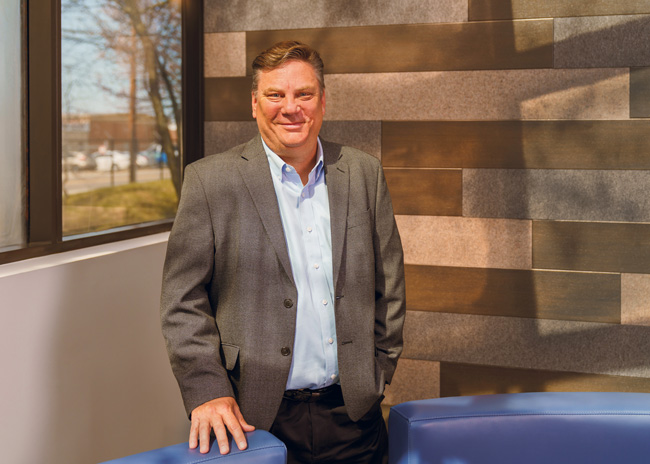 Tony Austing, vice president of account services and business unit leader: “The company is always looking for the positive and to innovate. If we break an egg, the company says, ‘Let’s make an omelet.’”On the heavy equipment side, a consultative approach can include documenting employee and customer paths through a facility, reviewing point-of-sale data, interviewing the operator’s staff and more to come up with solutions engineered to meet an operator’s specific needs. “We are trying to move toward solutions instead of selling products,” Weaver says. “We continue to move closer to a trusted, strategic partner from a transactional vendor. When you hear a customer talk about a challenge, it does not necessarily mean you solve it with a piece of equipment.”
Tony Austing, vice president of account services and business unit leader: “The company is always looking for the positive and to innovate. If we break an egg, the company says, ‘Let’s make an omelet.’”On the heavy equipment side, a consultative approach can include documenting employee and customer paths through a facility, reviewing point-of-sale data, interviewing the operator’s staff and more to come up with solutions engineered to meet an operator’s specific needs. “We are trying to move toward solutions instead of selling products,” Weaver says. “We continue to move closer to a trusted, strategic partner from a transactional vendor. When you hear a customer talk about a challenge, it does not necessarily mean you solve it with a piece of equipment.”
For example, Wasserstrom partnered with a supermarket chain that was having a problem with food waste with its prepared menu items. By observing staff habits, Wasserstrom was able to pinpoint some of the problems and make some changes to help address the issue. Notably, staff would come in at the start of the day and pull products from the refrigerators and let these menu items sit before putting them in either a hot food holding display or a refrigerated display case. “The units were not designed to cool things or heat them. They were designed to hold product. So, we went through and wrote training manuals with the operator,” Weaver says.
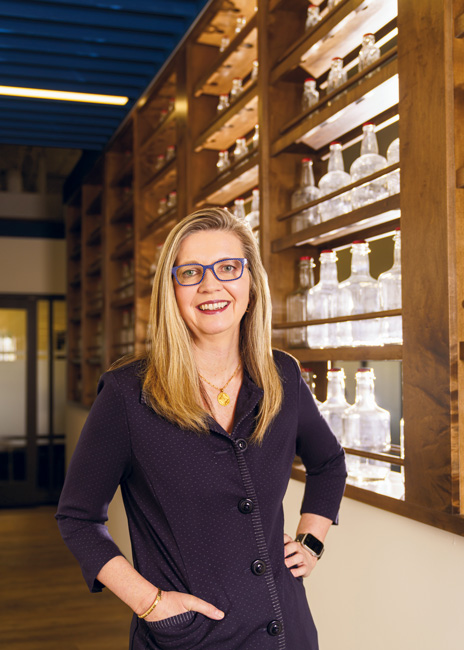 Cathy King, executive vice president of sales: “If we don’t follow what the data is telling us, it’s just numbers on the page. It’s about providing insights to our customers.”For reasons like this, more chains and other multiunit customers continue to evolve their relationship with Wasserstrom. “Most of our large customers will come to us for their kitchen of the future design,” Poor says. “We help them evolve their standard package or help them develop their prototype.”
Cathy King, executive vice president of sales: “If we don’t follow what the data is telling us, it’s just numbers on the page. It’s about providing insights to our customers.”For reasons like this, more chains and other multiunit customers continue to evolve their relationship with Wasserstrom. “Most of our large customers will come to us for their kitchen of the future design,” Poor says. “We help them evolve their standard package or help them develop their prototype.”
That consultative approach helps other parts of the company flourish, too. “During COVID we had a lot of supply chain issues, like everyone else did. So, you had customers who in the past had held hard to their specs but had to ask for alternatives due to the supply chain challenges,” King says. “Now, because we are in a period of higher inflation, it has shifted to ‘How can you help us save money? How can you help us reduce costs?’ They want us to help them be more efficient and save money.”
When working in more of a consultative role, it helps to be a good listener. “One of the first questions I ask when talking to a new client is what is their development plan and what are the roadblocks?” Poor says. “Each account has very different strategies and what we do and don’t do. What we do is tailored to their growth and development strategies. It’s not ‘here’s our one solution; take it or leave it.’ We can develop a design based on exactly what they tell us.”
And it is important to avoid taking a one-size-fits-all approach. “There are plenty of people out there where if you want to just buy a product, they can help you,” Myers says. “That’s not us. But if you need a customized or curated solution, that’s where we thrive.”
Austing agrees and adds, “Some customers are very specific about what they need. They look for an organization that will help them develop, literally from scratch, a new prototype. That’s where our consultative services and equipment design teams come in. Other clients, though, are not sure what they need. We can help ground them in reality and provide everything they need in a one-stop shop. We can sell you anything you want, but if you can’t use it, it doesn’t add value.”
Building and maintaining a strong product knowledge base becomes critical, too, when being more consultative. “If you are going to be a true partner to your clients, it’s up to us to have the knowledge and a strong perspective as to how these technologies will help support their businesses,” Poor adds. “We are really looking differently at what technology is out there for foodservice and what technology will drive the future of foodservice. We have been involved with robotics and companies that build robotics.” Wasserstrom also continues to look at the latest in holding technologies, dispensing equipment and more.
In other words, Wasserstrom is on an enterprise-wide mission to add value on the customers’ terms. “We try to take work off our customers’ plates, and that’s worth something to them. We try to get on the same side of the table as our customers to understand their needs. For a transactional dealer that would probably be baffling,” Myers adds.
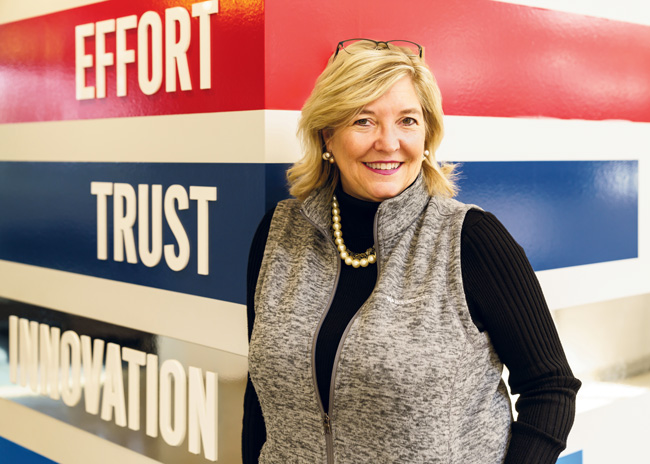 Treva Weaver, chief operating officer: “We continue to move closer to a trusted, strategic partner from a transactional vendor. When you hear a customer talk about a challenge, it does not necessarily mean you solve it with a piece of equipment.”
Treva Weaver, chief operating officer: “We continue to move closer to a trusted, strategic partner from a transactional vendor. When you hear a customer talk about a challenge, it does not necessarily mean you solve it with a piece of equipment.”
Technology
Another way the company continues to evolve is through increased use of technology. “Implementing new systems is really important. We are implementing bots to help with back-office functions,” Mangelson says. “We are trying to take expenses from those areas that don’t add value to the customer.”
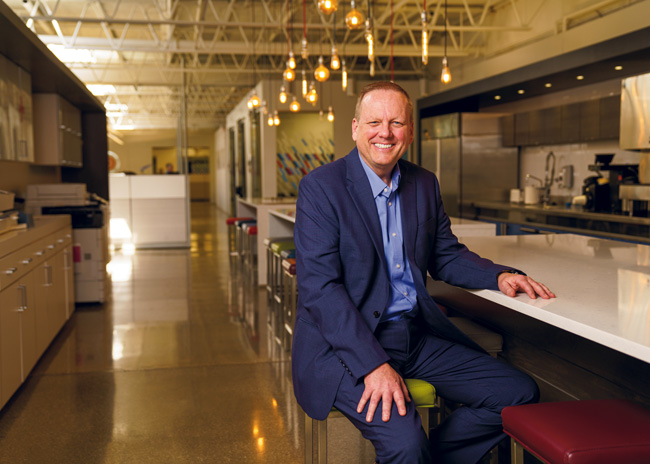 Dan Poor, senior vice president of growth and innovation: “We want to see problems and identify the solutions without being asked. When that happens, we can develop unique solutions.”At the same time, “We keep investing in technologies across the business that not only provide insights but also help us do things more quickly and efficiently,” Austing says. “We are teaching our associates how to do things but to do so with technology. This helps enhance their skill sets and makes our people more fulfilled. The company is always looking for the positive and to innovate. If we break an egg, the company says, ‘Let’s make an omelet.’”
Dan Poor, senior vice president of growth and innovation: “We want to see problems and identify the solutions without being asked. When that happens, we can develop unique solutions.”At the same time, “We keep investing in technologies across the business that not only provide insights but also help us do things more quickly and efficiently,” Austing says. “We are teaching our associates how to do things but to do so with technology. This helps enhance their skill sets and makes our people more fulfilled. The company is always looking for the positive and to innovate. If we break an egg, the company says, ‘Let’s make an omelet.’”
The way the company uses video calls represents one example of this evolutionary step. Wasserstrom combines its video calls with technology that takes scans from the field and turns them into drawings that eventually become foodservice designs. “We did not do video calls with installers prior to COVID. Now, that is a standard thing to understand the conditions out in the field and to capture data from the field,” Poor says.
Wasserstrom also enhanced its internal data systems. This investment paid dividends internally and externally. “This allows us to serve our customers with much greater visibility into their true demand schedules,” Weaver says. “What they care about is getting the right products into their hands to open their stores on time. It’s a truer partnership than it was before.”
Today’s operators want to make more data-driven decisions, and Wasserstrom is in a position to help. “We can now see data at a lower level, and we can see it more quickly. That allows us to better manage the business,” Mangelson says. “But it really helps us better understand our customers. With that insight we can go back to our vendors to work with them to help improve our end-user customers.”
It is important to keep in mind that although Wasserstrom is using more technology and more data, it is not a technology company. Wasserstrom is still a dealer. “We are not searching for things or technologies to sell. We are looking for other solutions we can bring to the table that help us be the tip of the spear for our customers,” Weaver says. “Our client champions need to be able to reach into a grab bag to get what they need to make the customer successful. It cannot be just about a three-compartment sink, but it needs to include understanding what else customers need to thrive.”
The net result is Wasserstrom uses these business intelligence tools to help their customers run their businesses better. “Data and analytics have been around for a long time, but data without outcome is just data,” King says. “You have to look at the data and ask what is it telling you? What action is the data prompting you to take? If we don’t follow what the data is telling us, it’s just numbers on the page. It’s about providing insights to our customers.”
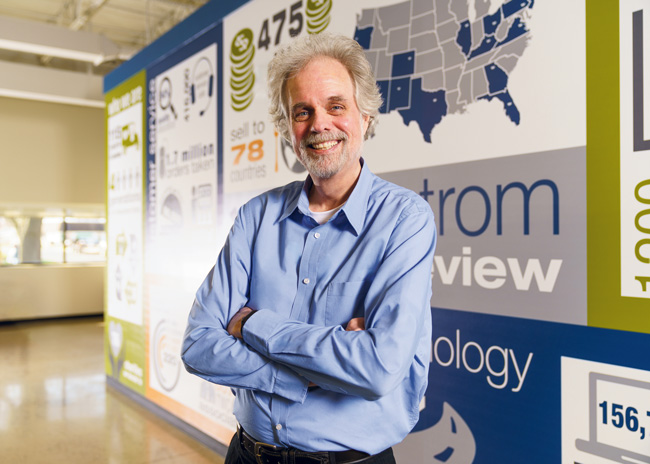 Eric Myers, vice president of marketing and customer experience: “We are a service-first model. We worked hard on that the past couple of years, training our associates that we sell service first.”
Eric Myers, vice president of marketing and customer experience: “We are a service-first model. We worked hard on that the past couple of years, training our associates that we sell service first.”
Future
What does the future hold for Wasserstrom? In many ways, its future will be much like its past. “It’s a competitive industry, and people will do whatever they have to do to win the business. But that’s not us,” Myers says. “We will pursue it in an honest, open and aboveboard way. Doing it this way, we are getting new customers from our competitors because they are not being serviced.”
And expect Wasserstrom will continue to take the same thoughtful, thorough approach to new technologies and more. “We put a roadmap together about the system changes we need to make over the next one, three and five years. We are looking at AI, just like anyone else. We are looking at our data and analytics to make sure we are better prepared,” Mangelson says. “We have groups and teams looking for technology that can add value. If we can make our customers more successful, we can be successful.”
All of this is done with the dual intent of serving customers and preserving a legacy. “We don’t ever want to be where some of those legacy retail brands that people speak of in the past tense are,” King adds. “So, you must constantly reinvent yourself to remain relevant to your customers and employees. If you look at the evolution of Wasserstrom, it has been successful by pivoting. And it’s up to us to care for that legacy by planting the seeds for the next three to four generations of customers and Wasserstroms.”
Family Ties
Brad Wasserstrom and Eric Wasserstrom serve as presidents of Wasserstrom, a Columbus, Ohio-based foodservice equipment and supplies dealership now in its fourth generation of family ownership. Here, the two cousins discuss how the company continues to adapt and evolve to remain relevant for future generations of customers and associates.
Wasserstrom is one company, yet the two divisions have very different types of transactions. How do you keep everyone aligned?
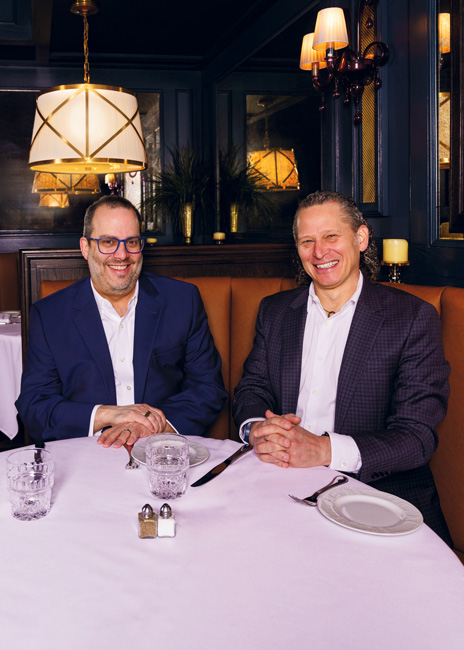 Eric: Really good direction and culture. The people working across product lines are the ones making it happen. They come up with what’s fair and what’s right. They know that as the water rises, all the boats come up, too. So, they are focused on making sure the way we work together makes sense. Yes, there are pluses and minuses with that, but it’s an overall net positive.
Eric: Really good direction and culture. The people working across product lines are the ones making it happen. They come up with what’s fair and what’s right. They know that as the water rises, all the boats come up, too. So, they are focused on making sure the way we work together makes sense. Yes, there are pluses and minuses with that, but it’s an overall net positive.
Brad: It starts with hiring great people. Make sure they understand the mission. Give them the tools they need to succeed. And then (mostly) stay out of their way.
What’s the experience you would like the Wasserstrom associates to have during their time with the company?
Brad: I want them to feel they have some control over what they do. That they have the ability to grow personally and professionally and have some fun while doing it. They feel like they are part of a team but even something bigger than that. If you can create a sense of team that’s greater than the individual, you really feel accountability toward each other, and that’s when you achieve great results. It’s something you always have to be actively working on with your people. The biggest compliment a person gives me is not what they say, but when they bring a family member to work in the business. And it happens regularly. It tells me they believe in the company and its leadership.
Eric: We have a very safe environment for our associates. Safe means they can express a business idea. They can be who they want to be individually, and they can do that knowing that we are not cutthroat — that if they make a mistake, they’ll be out of a job tomorrow. That safety and trust amongst each other allows everything else to occur.
The past is very present at Wasserstrom. There are artifacts from the company’s past at both locations. Conference rooms are named for Wasserstrom family members at one facility, while conference rooms at the other call out the company’s values. There’s even a mural of Nathan Wasserstrom and the founding family members. Yet the company maintains a very progressive vibe. How do you move forward while honoring the past?
Brad: I want to showcase our legacy because it’s important — 122 years, a lot of companies don’t get there. At the same time, though, I do not want to be beholden to that past. I try to use the past as learning experiences. But if I hear someone say, “that’s not how we do it,” the first thing out of my mouth is “why?” I don’t like the mindset of “this is how we do it because this is how we do it.” We like to hire people who push the boundaries. You have to force change because the world evolves. It’s easy to view our industry as slow to evolve, but that’s not true. It took me longer into my career to understand that. It takes the perspective of time to understand that things do change, and you have to move with it. Even in this new world of artificial intelligence and other forms of technology, we will never move away from winning with people.
Eric: The values of family and trust: These are not Brad and my voices. They are the words of the Wasserstrom associates. And we do not refer to our people as employees. They are associates. And that started with our great uncles. So, the history part plays an important role in holding on to the human part of the business. You have to give credit to previous generations. There are examples in all industries of companies where the previous generation never lets go until it’s too late for the next generation to step in and impact the business. The third generation was really good at that for us, and the second generation was really good at that for them. We are now the stewards, and it is important that we set things up for the next generation.
The company is on solid footing, but what steps do you have to take to ensure it continues to grow and evolve over the next five years?
Brad: We are going to have to figure out how to use the coming wave of technology-based tools to deliver value to our customers. Technology is not something that replaces people. It’s something that helps us grow. It’s about listening to our clients and understanding their definition of value. Do they want cheaper products? Do they want longer-lasting products? Do they want smoother installations so they can open their stores three days faster? I don’t know if there’s a secret formula. It’s just understanding what our customers value and driving toward it.
Eric: We better have the right bench strength coming up into leadership, so when they get there they feel empowered, they have knowledge, and they have the ability to say this is what we are doing today and the understanding of what is coming down the pike toward us. It’s always about that next group of management leaders that will drive the company forward.
If Nathan Wasserstrom were to walk through the door today, would he recognize the company he founded back in 1902?
Brad: His jaw would drop at what we have become. Building a company so big was not his intention. He had a big family — there were 14 mouths to feed. When he passed, there were no chain restaurants. We were a small dealer with fabrication capabilities. That’s why I think he’d be shocked. On the other hand, he would take great pride in knowing this all comes from his core values and his vision about how you take care of customers regardless of how much they buy from you. So, the core of who we are is still the same. It’s easy for me to live up to them (the core values) because that’s how I was raised.
Eric: Yes, he would recognize it because we are very conscientious to make a connection to our past. He would recognize this as his company because we promote it. He would be blown away at what it has become. He would be proud of the foundation we have built for future generations, as he did.



